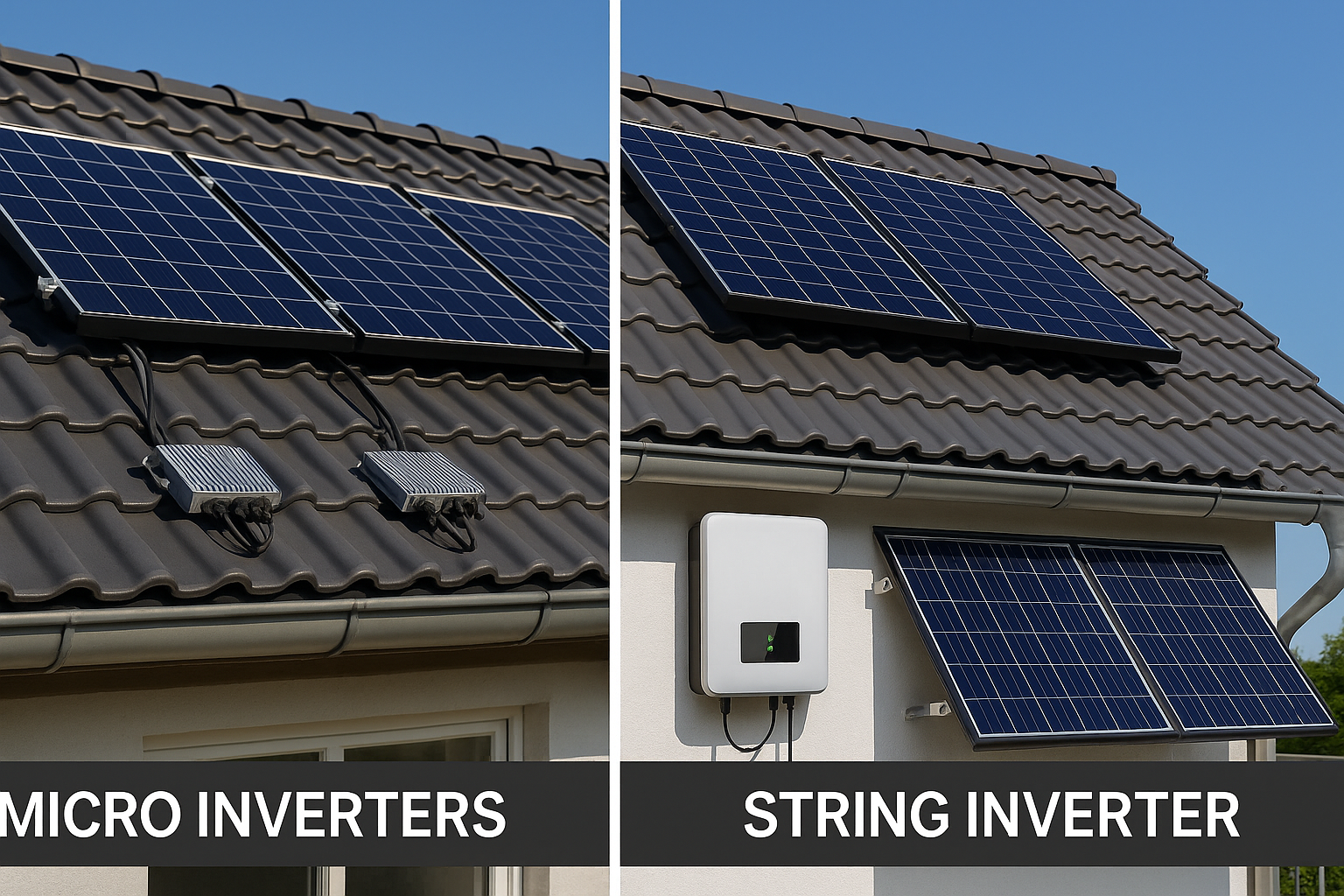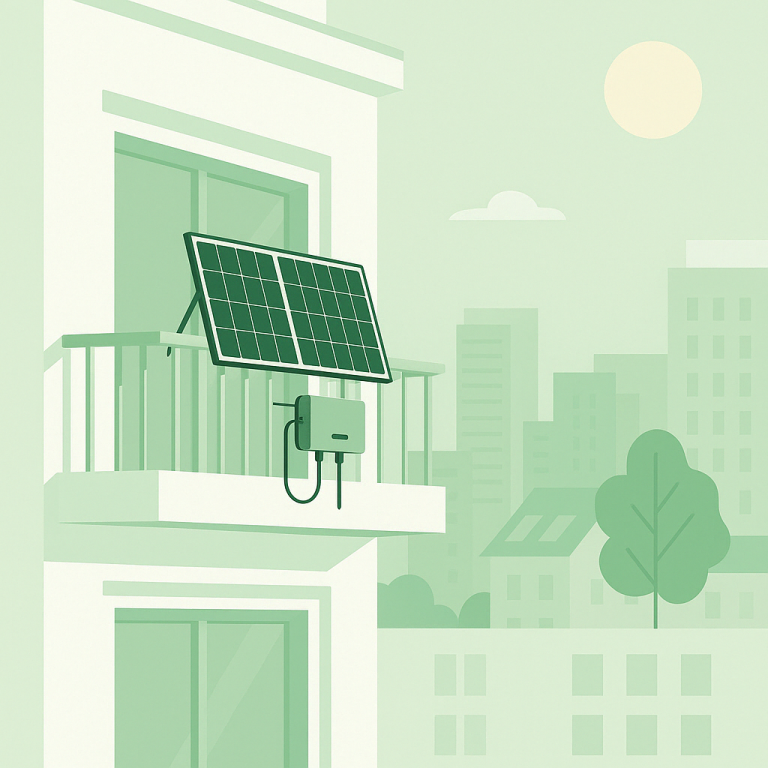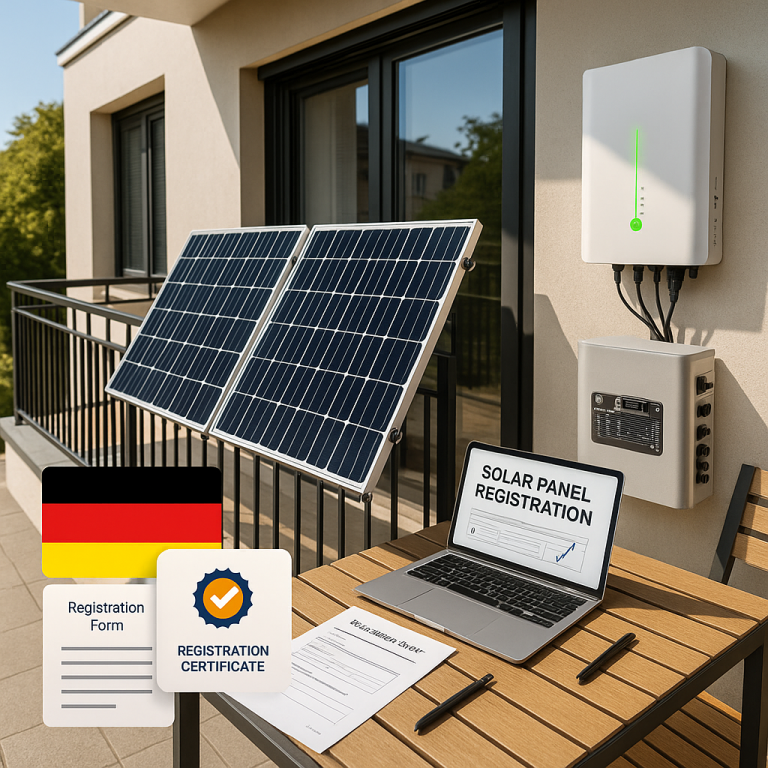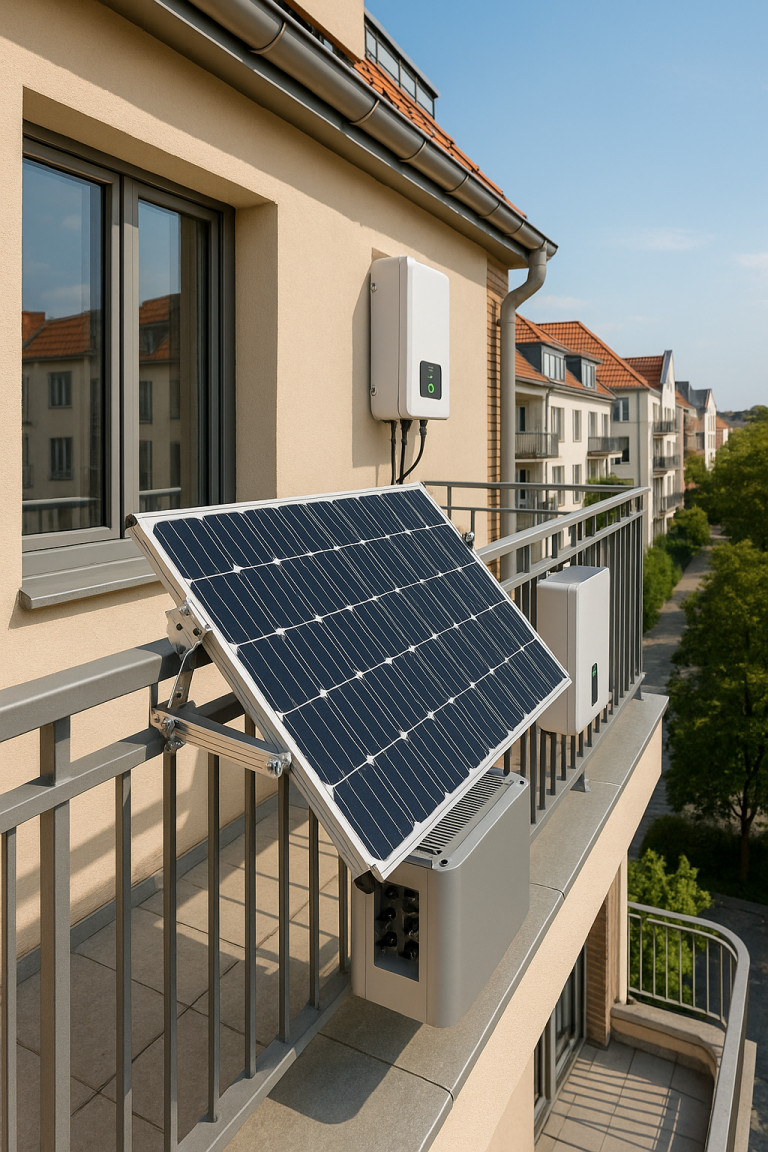? Introduction: Why the Inverter Type Matters
In a solar energy system, the inverter plays a critical role: converting direct current (DC) generated by solar panels into usable alternating current (AC) for your home. Choosing the right type of inverter — micro or string — can significantly affect your system’s efficiency, performance under shading, maintenance, and long-term costs.
This guide breaks down the differences between micro and string inverters, compares their pros and cons, and introduces options suitable for small European homes and balcony systems.
⚙️ What is a String Inverter?
A string inverter connects multiple solar panels together in a series (string), and all DC electricity is routed to one central inverter for conversion to AC.
Advantages:
- Lower upfront cost
- Fewer components (one inverter for multiple panels)
- Easier to maintain and monitor as a single unit
Disadvantages:
- Entire string performance is affected by one shaded or faulty panel
- Not ideal for complex or partially shaded roofs
- Limited flexibility for panel layout
Best Use Cases:
- South-facing rooftops with little to no shading
- Budget-conscious installations
- Large systems with uniform orientation
? What is a Micro Inverter?
A micro inverter is installed behind each individual solar panel, converting DC to AC on a per-panel basis.
Advantages:
- Independent performance per panel (no impact from shaded neighbors)
- Easier troubleshooting and real-time panel monitoring
- Higher total energy yield in partial shading or mixed-orientation systems
Disadvantages:
- Higher upfront cost (multiple devices)
- Slightly more complex installation
- Potentially more points of failure (if not using quality components)
Best Use Cases:
- Rooftops with varying angles or partial shading
- Small or irregularly shaped installations (e.g. balconies)
- Systems with high energy output targets
? Side-by-Side Comparison Table
| Feature | String Inverter | Micro Inverter |
|---|---|---|
| Cost | Lower | Higher |
| Performance in Shade | Decreases for all panels | Panel-level optimization |
| Maintenance | Centralized & simple | Modular, per-panel troubleshooting |
| Installation Complexity | Easier (single unit) | Slightly more complex |
| Monitoring | Whole system view | Individual panel monitoring |
| Flexibility | Low (one layout) | High (varied panel orientation) |
| Suitable For | Uniform rooftops, large systems | Shaded roofs, small/balcony systems |
? JYH Inverter: A Hybrid Micro Solution
JYHsolar offers a range of JYH-inverter models that bridge the gap between micro and string inverters. Our GTMI Series (300W–1600W) micro-inverter line is designed specifically for compact systems like balcony solar and small homes.
? Features of JYH-inverter:
- MPPT tracking for panel-level optimization
- Grid-compliant (VDE, CE certified)
- IP67-rated housing for outdoor durability
- Available in 300W, 600W, 800W, 1000W, 1200W, and 1600W models
? Product Datasheet: JYH GTMI Series Micro Inverter (PDF)
With over 96% efficiency and modular expandability, these inverters combine the strengths of micro setups with simplified system planning.
⚖️ How to Choose the Right Inverter for Your Setup
Ask yourself:
- Is your roof shaded at any time of the day?
- Are your panels installed at different angles or orientations?
- Is precise panel monitoring important to you?
- Do you plan to expand your system over time?
If your answer is “yes” to most, a micro inverter may be the better choice. If budget and simplicity are more important, a string inverter could work — as long as your roof has good solar exposure.
Need help deciding? Contact us for a free system assessment ➡️ JYH Contact Page
✅ Conclusion: Choose Smarter, Not Just Cheaper
While string inverters are cost-effective and ideal for simple systems, micro inverters offer greater flexibility, yield, and system intelligence. For Europe’s increasingly diverse residential setups — particularly those with space constraints or shading — micro inverters like the JYH-inverter series offer a future-proof solution.
Still not sure? Read our guide on How to Choose the Right Solar Inverter for Small Home Setups in Europe.




